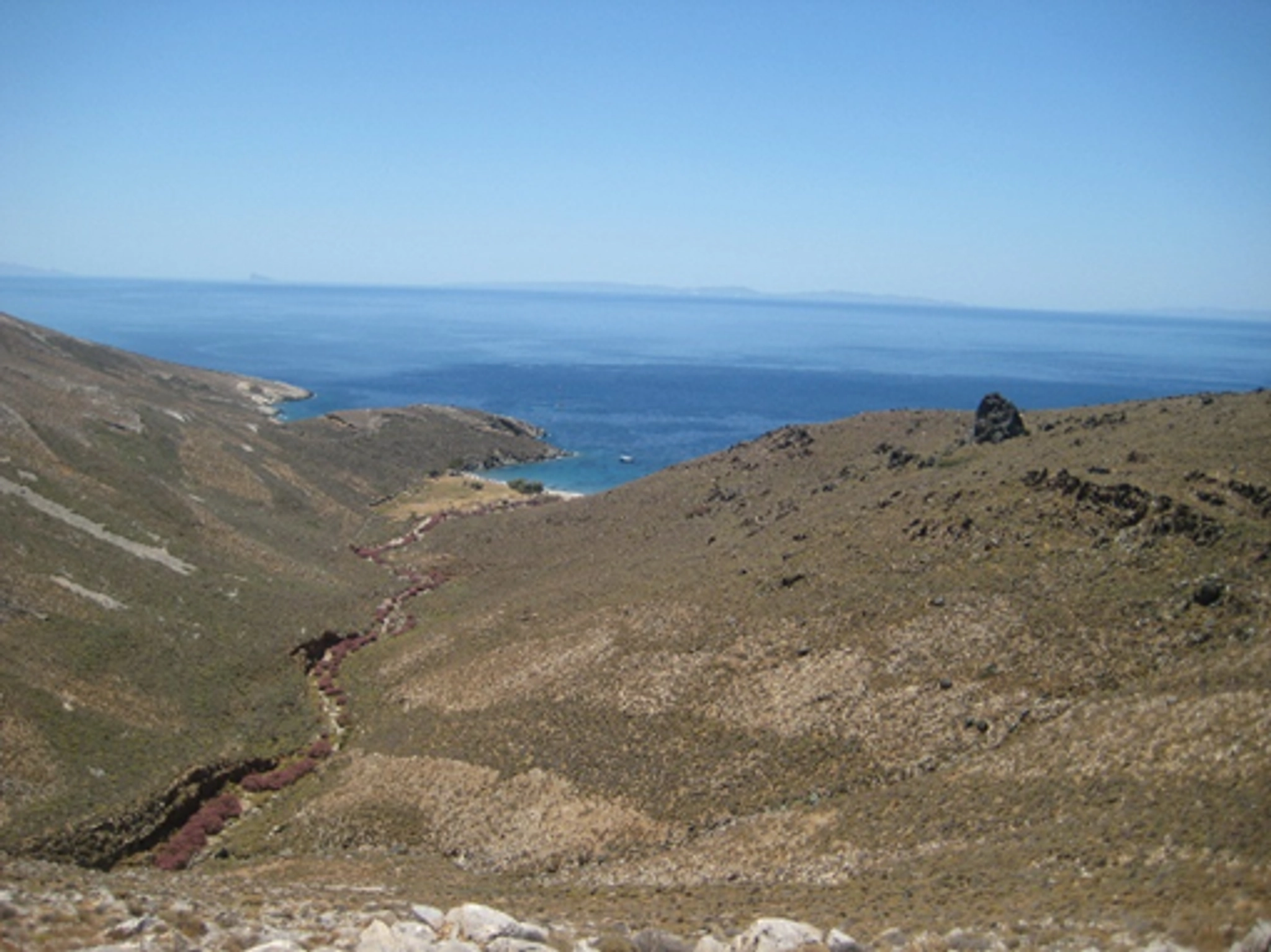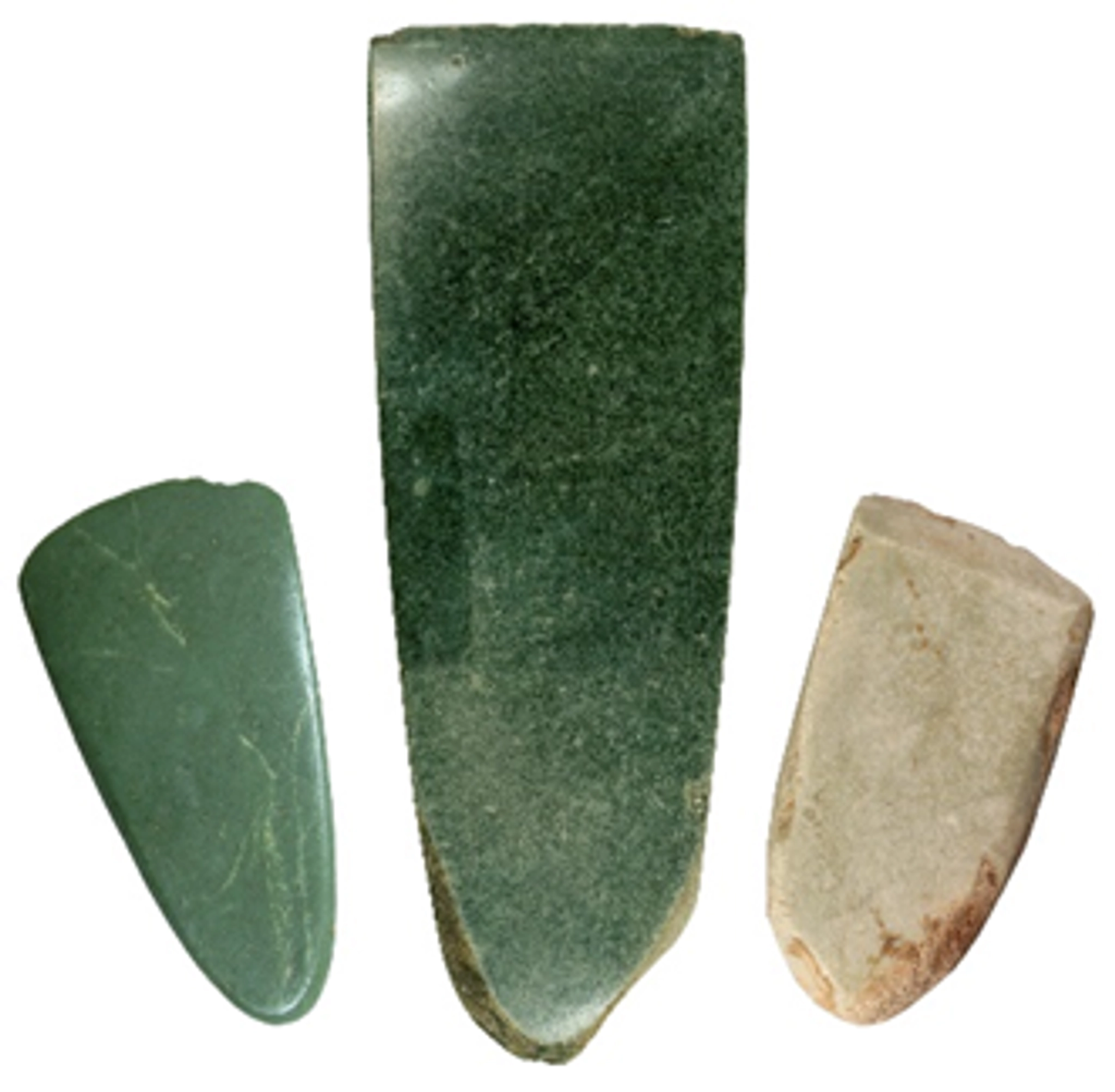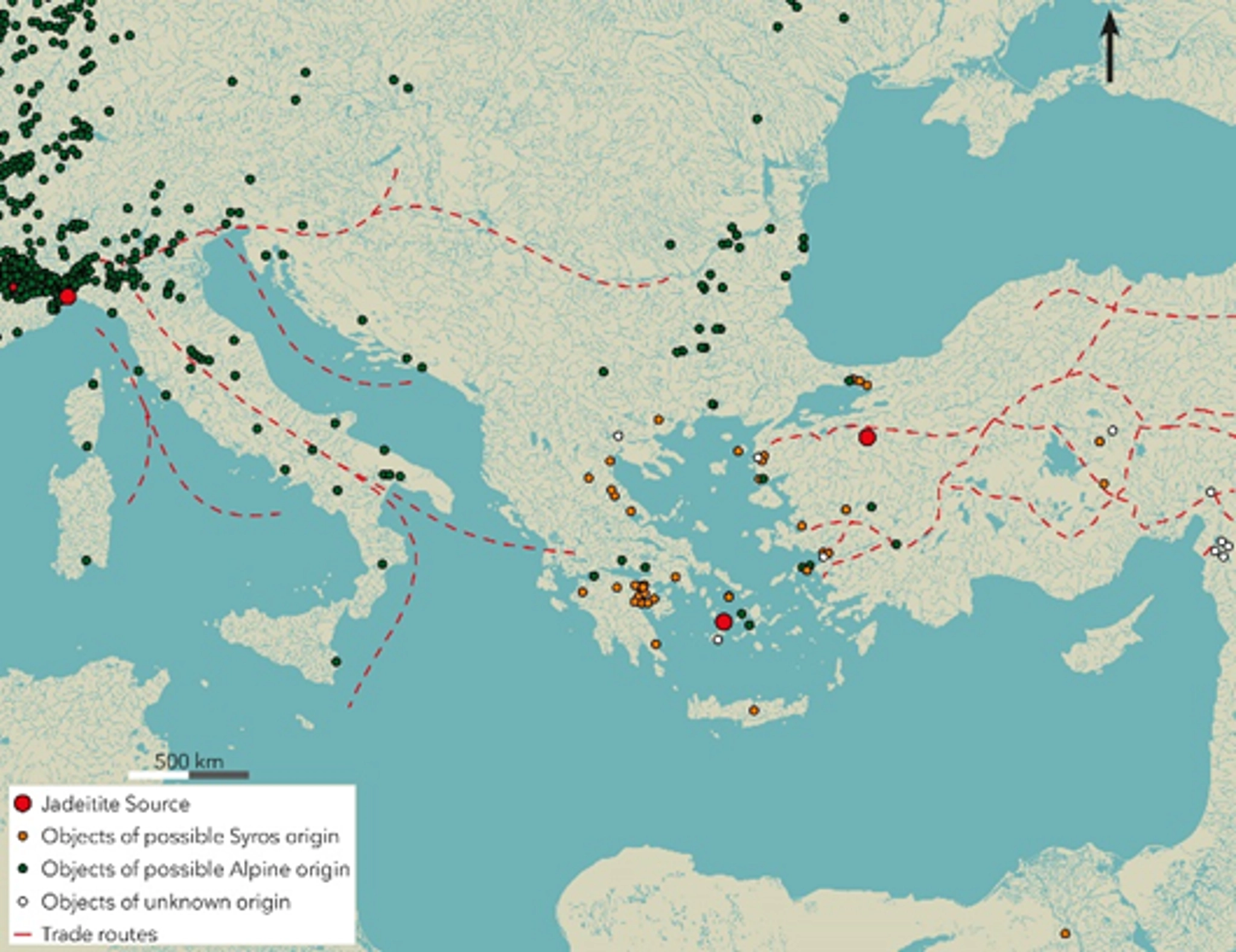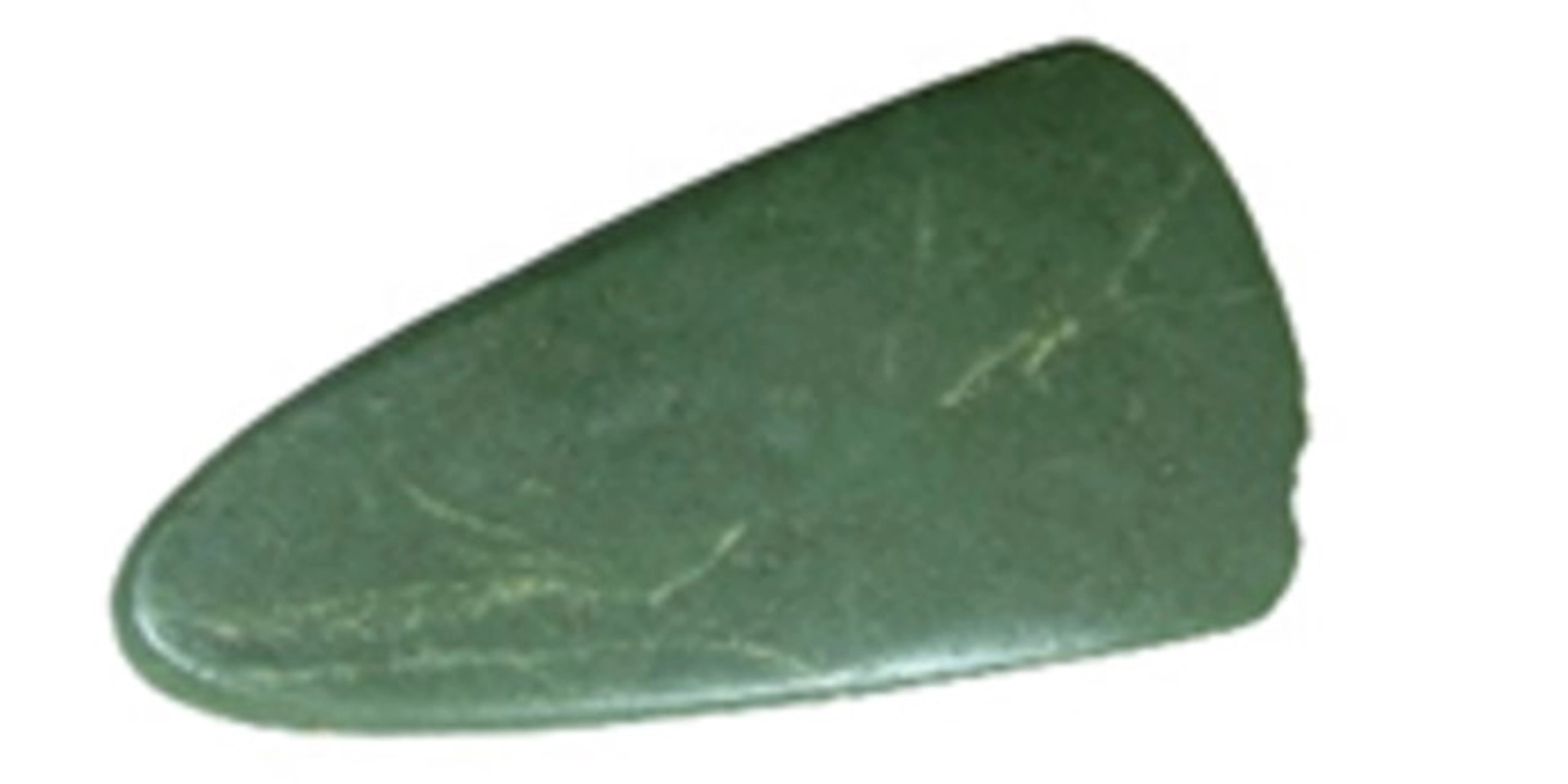An archaeological journey into the socio-economic behavior of raw material exploitations in the Aegean Stone Age
Background and Purpose
The Jade Odyssey Project explores the exploitation of jadeite sources and the production of jadeite axes in the Eastern Mediterranean region. The project has identified a jadeite extraction for axe production in the Kampos Valley on the Cycladic Island of Syros during the Neolithic Age. In collaboration with the Danish Institute at Athens and the Cyclades Ephorate, the project has been granted a five-year survey permit from the Greek authorities to explore these finds geologically and archaeologically (FIG. 1).
What is Jadeite?
Jadeite (NaAlSi2O6) is an extremely hard and rare mineral found only in association with metamorphic rocks. It exhibits a distinctive vitreous luster when polished, making it ideal for crafting polished axes of high prestige, which continues to make it a sought-after semi-precious rock even today (FIG. 2).
Archaeological Investigations and Perspectives
The archaeological investigations of jadeite quarries on Syros and the surrounding Cycladic islands aim to reveal, in the coming years, the existence of prehistoric societies that organized maritime journeys, extracted jadeite, and produced jadeite axes for exchange and trade in the Eastern Mediterranean region. Through this work, the project aims to significantly refine our understanding of the socio-economic impacts this resource exploitation had within these societies.
The results are likely to reshape our view of Stone Age societies by revealing them as competitive maritime socio-economic institutions moving towards fluctuations of inequality. Thus, aspects of the Jade Odyssey project can provide us with a historical perspective on the resource-related challenges we face today and in the future.
Fieldwork and Methods
Our fieldwork involves documenting and recording jadeite quarries, along with archaeological examination of associated prehistoric activities. Every year, the project collects samples of artifacts such as charcoal, macrofossils, shells, stone tools, and ceramics to determine dating, origin, and climate-seasonal specifics. This provides insights into when and for how long early Stone Age farmers visited Syros, where they came from, and how the axes were subsequently distributed in the Eastern Mediterranean region (FIG. 3).
Key Finds and Discoveries
Initial archaeological surveys in 2022 and 2024 resulted in the identification of four main areas in northern Syros, designated as AREA 1-4, where prehistoric jadeite extraction and related temporary settlements occurred (FIG. 4). The most significant evidence of these activities was observed in the quarrying sites of the Kampos Valley (AREA 1) and to a lesser extent in adjacent valleys (AREA 2-4). In the Kampos Valley alone, the project has identified multiple jadeite sources and collected over 16,000 pieces of worked jadeite, which will undergo further study in the coming years.
In 2024, reconnaissance of the surrounding Cycladic islands revealed smaller, previously unknown jadeite sources. These sources will be registered and documented in the future, as they may have also been used for axe production in the Stone Age, similar to what is observed on Syros.
Interdisciplinary Collaboration
The Jade Odyssey Project is an interdisciplinary collaboration led by an international research team headed by senior researcher Dr. Lasse Vilien Sørensen from the National Museum of Denmark together with the Ephorate of Antiquities of the Cyclades, the Danish Institute at Athens, and several partners in Greece, Turkey, Bulgaria, Italy, Austria, Germany, England, France, USA, and Denmark.
The project is generously funded by the Consul General Gösta Enbom's Foundation, the Ministry of Culture's Research Committee through a grant to the NeoProvenance project (FPK.2021-0018), and the ERC-2023-CoG project: 101125419 "FROM STONE TO HOME - Polished stone tools biography and their social and economic impact in the Aegean Neolithic".

Fig. 1. Photograph of the Kampos Valley located in the northern part of Syros.

Fig. 2. Examples of different jadeitite axes from the Eastern Mediterranean region

Fig. 3. Distribution of jadeitite axes and sources in the Western Mediterranean region (Italian Alps) and the Eastern Mediterranean region (the Cycladic Island of Syros in Greece and Harmancik near Bursa in western Turkey)

Fig. 4. Areas planned to be further investigated for jadeitite boulders and prehistoric quarrying activities in northern Syros concentrating on the Kampos Valley (AREA 1) and neighboring valleys (AREA 2-4)
Acknowledgments & contact person
Contact person
Lasse Vilien Sørensen
Senior Researcher, PhD, Mag.art.
Director of The Jade Odyssey Project
PI of ERC-2023-CoG-projektet: 101125419 ‘FROM STONE TO HOME’
Department of Prehistory, Middle Ages and Renaissance
The National Museum of Denmark
Acknowledgments
Consul General Gösta Enbom's Foundation
The Ministry of Culture's Research Committee


